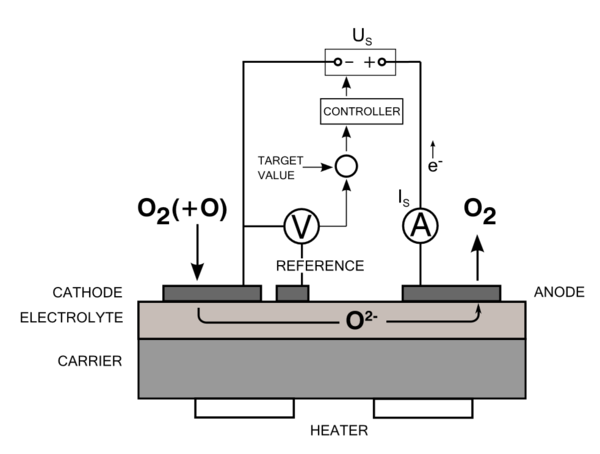FIPEX
The aim of the FIPEX experiment is the measurement of the atomic oxygen density along the trajectory. It employs two types of solid electrolyte sensors that differ in their electrode material. Platinum electrodes are sensitive to both molecular and atomic oxygen while gold electrodes show sensitivity mostly to atomic oxygen. A low voltage is applied between anode and cathode pumping oxygen ions through the electrolyte ceramic (yttria stabilized zirconia, YSZ). The current measured is proportional to the oxygen density. The electrodes are screen printed on a ceramic substrate that is housed in an aluminum sensor head. In order to measure the static number densities the sensor surface is oriented perpendicular to the rocket axis. Sampling is done with a frequency of 100 Hz and enables a spatial resolution of 10 m. Calibration is done for molecular and atomic oxygen in lab tests.
Fig. 1 Schematic of the FIPEX sensor.

Contact
-
Dr. Boris Strelnikov
+49 (0) 38293 68 109












